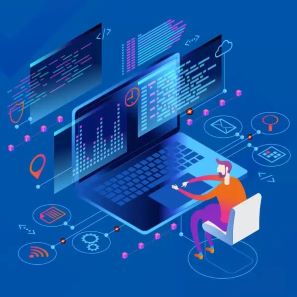EEE6767 Embedded Programming for IoT Sensing, Network, Control, and Applications
Course Objectives:
To provide students with control systems theory and necessary skills in real-world Internet-of-Thing (IoT) applications. IoT, a typical cyber-physical system, consists of a collection of computing devices communicating with one another and interacting with the physical world via sensors and actuators in a feedback loop.
Course Description:
The cyber-physical systems control (CPS) and IoT applications, filter technology, the design of feedback control in the embedded systems, and the hands-on implementation of the CPS systems sensing systems assembly, and systems testing.
Suggested Materials:
- Principles of Cyber-Physical Systems, by Rajeev Alur, MIT Press 2015, ISBN 9780262328463
- EAGLE Pro PCB Design, by CadSoft Computer. Already being installed on the ECE Microsystem Lab Computers. Tutorial link: http://www.cadsoftusa.com/fileadmin/journalist/Documents/V7.3_tutorial_en.pdf
- CC3200 SimpleLink LauchPad by Texas Instrument: http://www.ti.com/tool/CC3200-LAUNCHXL $29.99

- CST-EDU: a cyber control education platform:

General:
- Attendance: Regular attendance at all lectures is expected and should be considered mandatory. Failure to attend class will affect how well you perform on projects and will ultimately affect your grade. Planned absences should be arranged in advance.
- Cell Phone Usage – As a courtesy to others, please disable all audible cell phone ringers during lectures and laboratories. Do not take calls during class! All wireless devices must be disabled and stored during all exams and quizzes.
- Correspondence/Announcements: All messages related to this course will be sent to your FIU mailing address only.
- Assignments/Materials: will be collected before Monday’s class.
Class and Home Assignments:
- Classwork and homework will be assigned. All assignments are pledged, meaning that the work that you turn in must represent your own efforts. All assignments in the past week are due before Monday’s lecture. Unless prior arrangements are made, Late Assignments Will Not Be Accepted.
- Each student must perform his or her own work. Any work submitted must represent your (or team’s) own effort.
Course Grading:
Your final grade will be based on the following:
- Class and home assignments: 60%
- Project Reports: 40%
Grading Scale:
A: 95-100, A-:90-95
B+: 86-90, B: 83-86, B-: 80-83
C+: 75-80, C: 70-75
D: 60-70
F: 0-60
Pledged Examinations and Assignments:
The definition of a “Pledged” assignment means that the work was completed independently, without giving or receiving assistance from another person.
Final Grade:
The grade you receive for this course should reflect your own work and efforts. Therefore, the work (examinations, problem sets, and other assignments) must be your own.
Example Schedule:
| Week | Topics and Tasks |
| 1 | Couse Information and Requirement Introduction to IoT |
| 2 | Introduction of Texas Instrument IOT Solution – CC3200 Introduction to Energia 1 Introduction to Energia 2 Lab Exercise with CC3200 LauchPadClass Assignment (1): RGB Blink |
| 3 | Introduction to Energia 2 Lab exercise with CC3200 launchpad Class Assignment (2): Read XYZ Class Assignment (3): Connect WiFi with WPA |
| 4 | Introduction to Energia 2 Programming SkillMultitasking Lab exercise with CC3200 launchpad Class Assignment (4): MultiBlink with multithread |
| 5 | Introduction to CyberSend-EDU Platform 1 Self-test for CyberSens-EDU Board using embedded self-test code MultiBlink using ‘Clock’ library (multiBlink_CyberSens_EDU) Introduction to CyberSend-EDU Platform 1 (Continue) Si7021 weather sensor and library (Si7021_CyberSensEDU) Timer library |
| 6 | Lab exercise with CyberSens-EDU Class Assignment (5): Temperature and Humidity Monitoring Introduction to CyberSend-EDU Platform 2 Installation and implementation of GFX library for SSD1306 OLED display (ssd1306_CyberSensEDU) Power supply (TPS73XXX) and battery charger (MCP73381) |
| 7 | Introduction to CyberSend-EDU Platform 2 (Continue) Power supply (TPS73XXX) and battery charger (MCP73381) – Review MAX17048 Battery fuel gauge (Max17048_CyberSensEDU) Implementation of GFX library for SSD1306 OLED display (ssd1306_CyberSensEDU) |
| 8 | Introduction to CyberSend-EDU Platform 2 (Continue) Installation and implementation of GFX library for SSD1306 OLED display (ssd1306_CyberSensEDU) Lab exercise with CyberSens-EDU Class Assignment (6): TimeBatteryGauge |
| 9 | Lab exercise with CyberSens-EDU (Continue) Class Assignment (6): TimeBatteryGauge (Continue) Introduction to CyberSend-EDU Platform 3 Lab exercise with CyberSens-EDU Class Assignment (7): Interrupt to light LED Class Assignment (8): Onboard recording of SOP2 and Body Motion (data encoding) |
| 10 | Lab exercise with CyberSens-EDU (Continue) Class Assignment (7): Interrupt to light LED Class Assignment (8): Onboard recording of SOP2 and Body Motion (data encoding) Class Assignment (9): Retrieval of on-board recordings (Data decoding) |
| 11 | Lab exercise with CyberSens-EDU (Continue)Class Assignment (9): Retrieval of on-board recordings (Data decoding) |
| 12 | Introduction to CyberSend-EDU Platform 4Lab exercise with CyberSens-EDU Class Assignment (10): Force Sensing using A/D and Motor Control |
| 13 | Lab exercise with CyberSens-EDU (Continue)Class Assignment (10): Force Sensing using A/D and Motor Control |
| 14 | Lab exercise with CyberSens-EDU (Continue) Class Assignment (10): Force Sensing using A/D and Motor Control Class Assignment (11): Remote Force Sensing and Remote Motor Control |
| 15 | Thanksgiving (no class – working on your own) |
| 16 | Lab exercise with CyberSens-EDU (Continue) Class Assignment (11): Remote Force Sensing and Remote Motor Control Device Return |
| 17 | Exam week – No Class |

